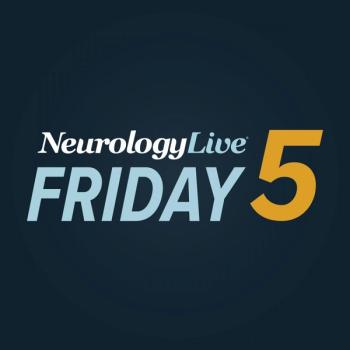
Why Early Identification of Atypical Parkinsonian Syndromes Matters in the Clinic: David Shprecher, DO, MSci, FAAN
The director of movement disorders at the Banner Sun Health Research Institute discussed distinguishing atypical Parkinsonian disorders early and planning care around their complex symptomatology. [WATCH TIME: 4 minutes]
WATCH TIME: 4 minutes
"In particular with dementia with Lewy bodies or multiple system atrophy, the autonomic symptoms can be a lot more challenging, and people can get to a point where, if they have severe orthostatic hypotension, they no longer respond well to treatment and just aren’t able to be on their feet because of it."
Progressive supranuclear palsy (PSP), multiple system atrophy (MSA), corticobasal syndrome (CBS), and dementia with Lewy bodies (DLB) are among the most commonly recognized atypical parkinsonian syndromes. Applying their diagnostic criteria may require specialized clinical expertise, and most guidelines call for ruling out alternative conditions, though specific methods for doing so are not always clearly defined.1 The broader group of atypical parkinsonian disorders also includes diseases with structural, genetic, vascular, toxic/metabolic, infectious, or autoimmune causes.
Given the diagnostic complexity of atypical parkinsonian syndromes, timely identification may help reduce uncertainty, enable earlier symptom management, and guide access to appropriate resources and support. It can also help prevent unnecessary testing and facilitate consideration for clinical trial participation. These themes were highlighted at the 4th Annual
Following the session at the Congress, Schprecher, who also serves as a clinical associate professor at University of Arizona-Phoenix, sat down with NeurologyLive® to further discuss the complexities of diagnosing and managing atypical Parkinsonian syndromes. He outlined key clinical features that may prompt additional evaluation, including early cognitive impairment and Parkinsonism that predominantly affects the lower body. He also discussed the role of emerging biomarkers in diagnosis, noting both their potential value and current limitations. Throughout the conversation, Shprecher emphasized the importance of early care planning, given the often-rapid progression and multifaceted challenges associated with these disorders.
REFERENCES
1. Bruno MK, Dhall R, Duquette A, et al. A General Neurologist's Practical Diagnostic Algorithm for Atypical Parkinsonian Disorders: A Consensus Statement [published correction appears in Neurol Clin Pract. 2025 Feb;15(1):e200399. doi: 10.1212/CPJ.0000000000200399.]. Neurol Clin Pract. 2024;14(6):e200345. doi:10.1212/CPJ.0000000000200345
2. Shprecher D. When the Shoe Doesn’t Fit: Atypical Parkinsonisms. Presented at: ATMRD; June 27-30, 2025; Washington, DC.
Newsletter
Keep your finger on the pulse of neurology—subscribe to NeurologyLive for expert interviews, new data, and breakthrough treatment updates.








































